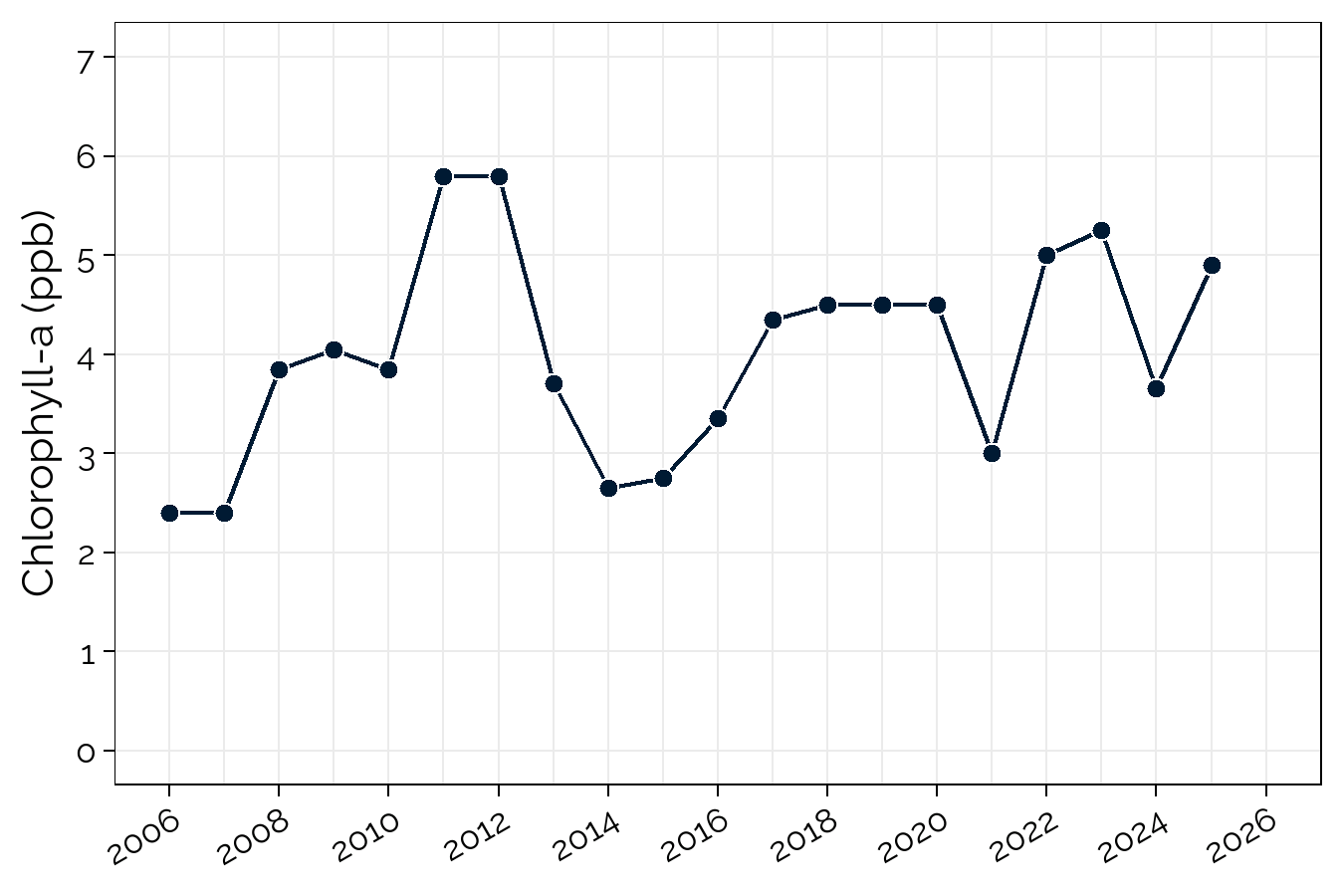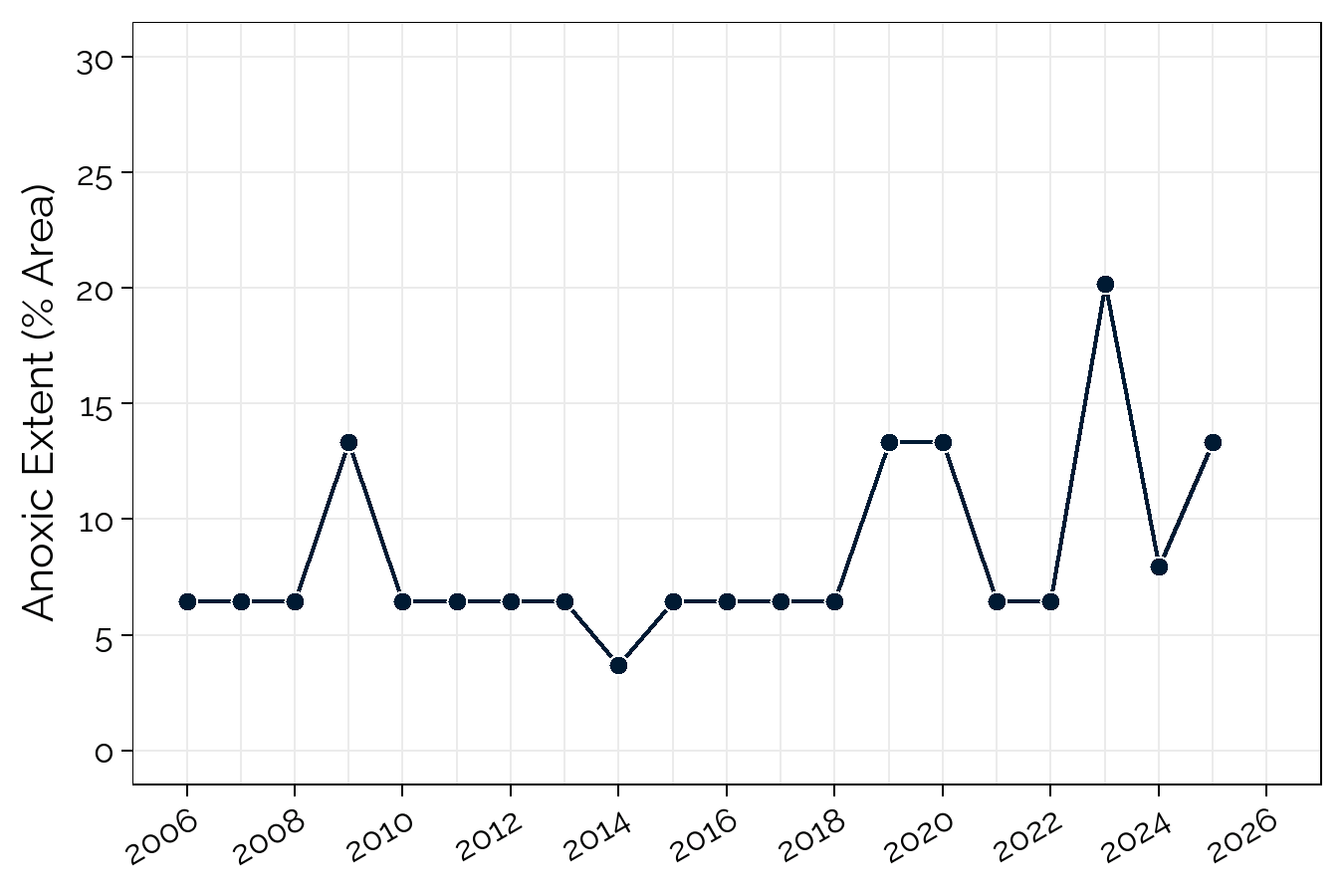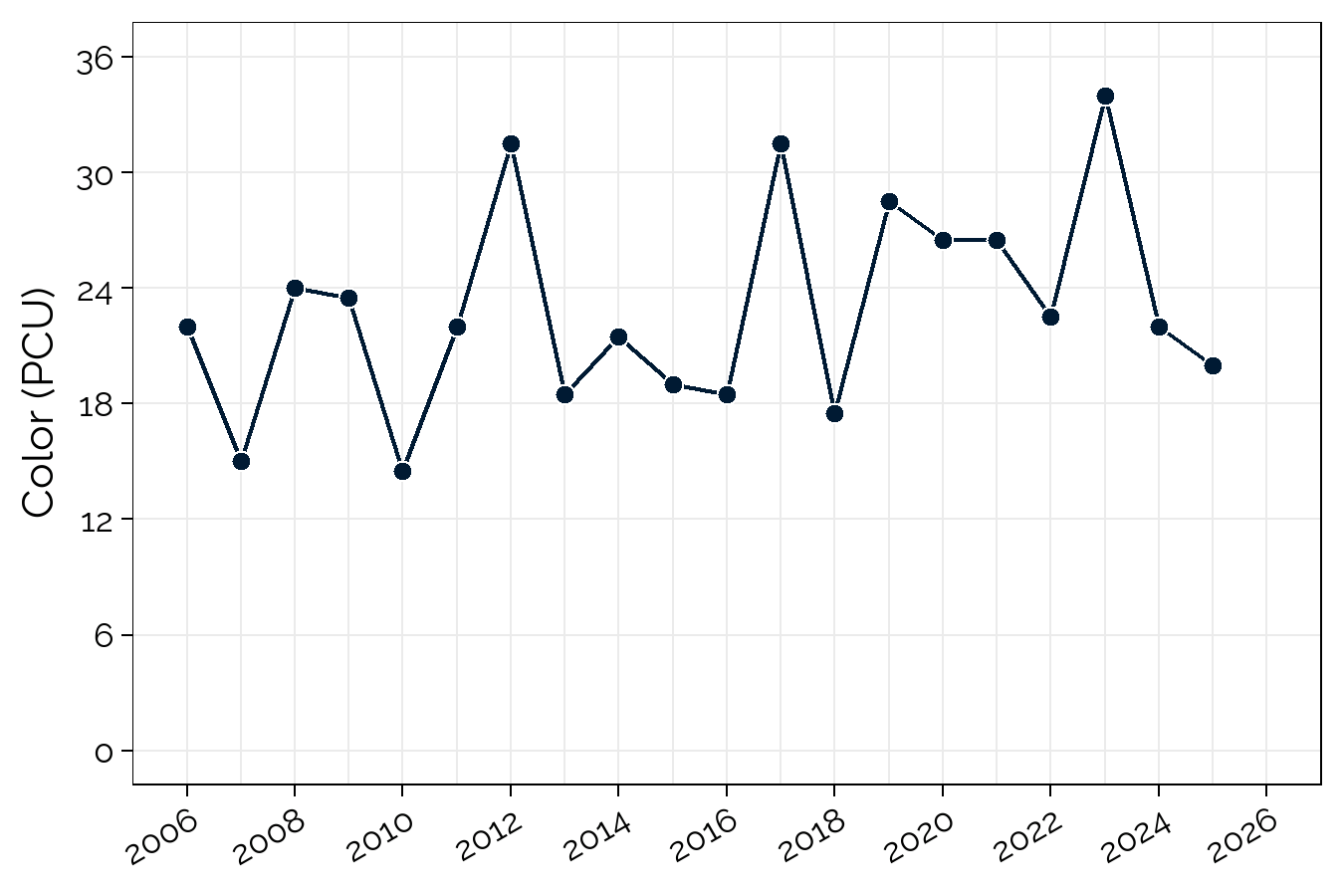Bradley Pond
Bradley Pond is 34 acres and 30 feet deep. There’s a boat launch on the northeast shore but boating is limited to paddle, oar or sail propulsion. Principal fisheries are brown trout, brook trout, largemouth bass and chain pickerel. The state of Maine describes Bradley as “a relatively small pond with dark weedy waters which can provide a semi-wilderness fishing experience.”
Click to enlarge
Bradley (Midas #3220) drains into Heald Pond, which in turn drains to a tributary to Boulder Brook and eventually Kezar Lake. Water quality monitoring data have been collected since 2006 at the deepest spot.
Water Quality
water clarity
Since 2006, water clarity at Bradley Pond has decreased by nearly two feet.
total phosphorus
Since 2006, total phosphorus at Bradley Pond has increased by about 5 ppb, with 2019 experiencing the highest annual average total phosphorus on record.
chlorophyll-a
Since 2006, chlorophyll-a at Bradley Pond has ranged from about 2 to 6 ppb. The period from 2011 to 2012 saw a marked rise in chlorophyll-a. Nutrient-rich runoff entering the lake during wetter years, combined with warmer air temperatures, can fuel algae growth.
anoxic extent
Dissolved oxygen profiles show oxygen depletion beginning at 5-6 meters below the water surface (within a few meters of the bottom). The extent of anoxia is overall excellent at Bradley Pond (affecting <10% of pond area). However, 2023 saw a significant spike in anoxic extent, affecting over 25% of pond area. This may be due to the excessive nutrient runoff caused by high precipitation levels experienced in 2023. Dissolved oxygen at depth should continue to be monitored closely in the future.
temperature
The volume-weighted average surface water temperature for the top 2 meters does not show a statistically significant trend since 2006 at Bradley Pond.
ph
Since 2006, pH at Bradley Pond has remained relatively stable. Mean annual pH falls within acceptable ranges for aquatic life, but hit record lows below the recommended minimum threshold in 2016 and 2017.
total alkalinity
Since 2006, total alkalinity at Bradley Pond has remained stable. Bradley Pond has naturally-low alkalinity (or buffering capacity) as a result of its contributing geology (i.e., granite) that lacks carbonates, bicarbonates, and carbonic acid. These low concentrations make Bradley Pond susceptible to changes in pH, particularly from acidic deposition in the form of rain or snow, which can jeopardize the health of freshwater fish species.
color
Since 2006, color at Bradley Pond has revealed no statistically-significant trends. High color was observed in 2012, 2017, and 2023, likely due to the wetter summer conditions. Color is highly related to summer precipitation; wetter years show higher color as more materials are washed off the landscape to the pond.









